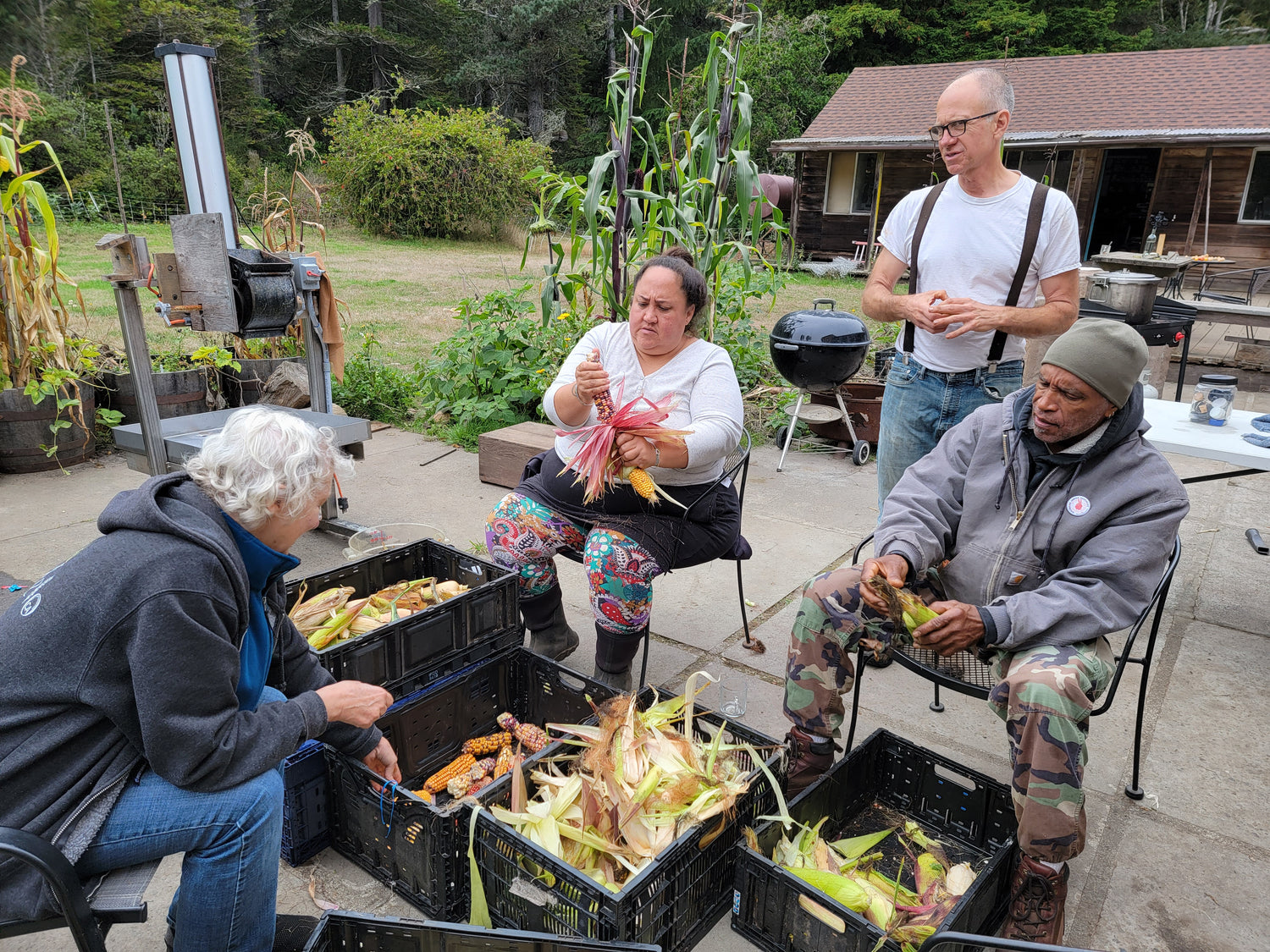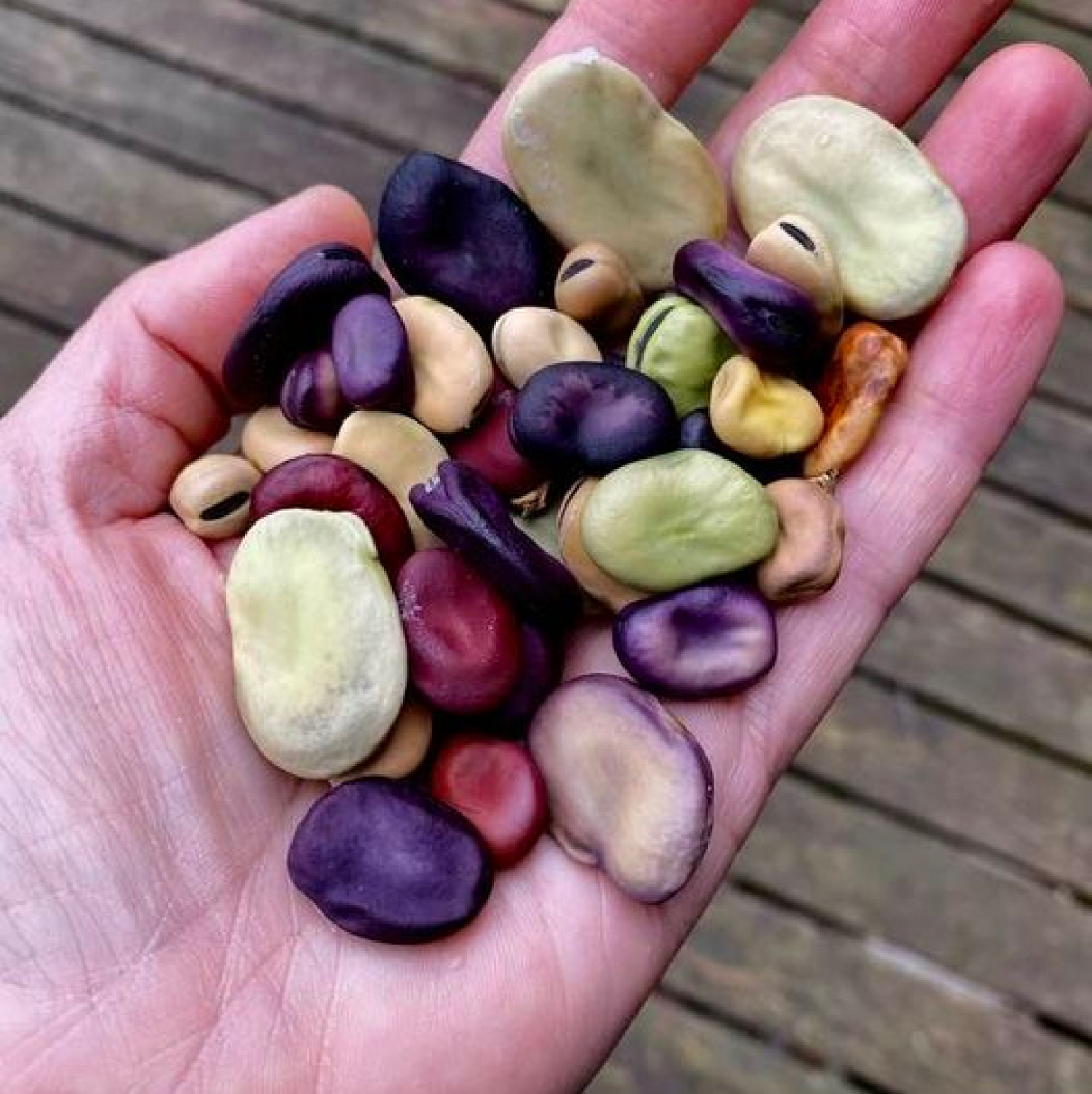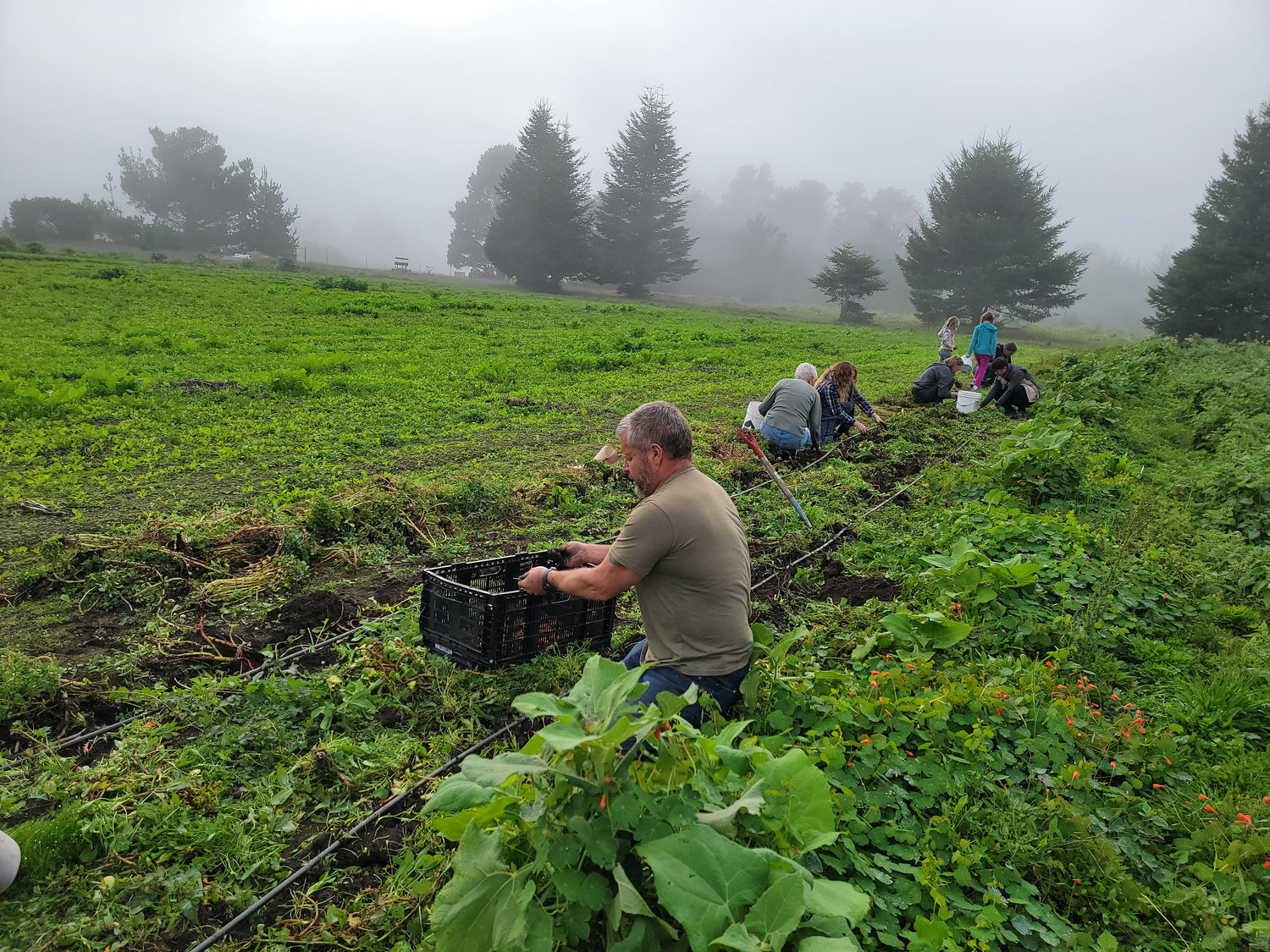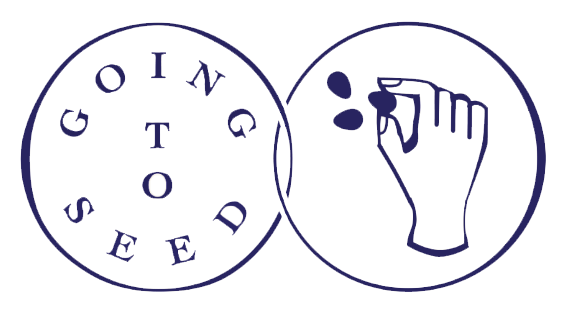Programs
While many important projects are preserving the remaining traditional crop heirloom and ‘landrace’ populations around the world, Going to Seed is unique in focusing on supporting the journey of small food producers as they develop their own genetically diverse, adaptable crop populations that thrive wherever they are. These skills are useful for growers adapting our food system to their own local environments, as well as weather conditions that are changing every year.

Education
Our courses bring in a diversity of teachers and opinions and draw on international participants' experiences and methods. Our flagship courses, Landrace Gardening and How Microbes Help Local Adaptation, provide a foundation in growing methods to decrease inputs and increase resilience. Over time, we will be adding more courses and teachers to expand the available free knowledge base. Through education, we empower individuals and communities around the world to shift their growing practices.

Community Building
Local adaptation happens on the ground, in farms and gardens, where growers may not be exposed to alternative ideas and practices. We are partnering with the Seed Library Network and the Million Seed Savers campaign to develop presentations and resources to support local communities. Seed libraries are present in thousands of rural communities around the U.S., so this partnership gives us access to local seed organizers who can facilitate collaborative community seed saving projects.
In addition, our online community of growers, seed savers, and educators, share knowledge, collaborate, and support each other. Members are early adopters who may not yet have a local community to share experiences, ask questions, or share seeds with. This space makes sure gardeners get their questions answered and have peer support in changing long-held beliefs about how to grow food.

Seed Distribution & Tracking
Access to genetically diverse seed, grown in minimal input systems, is limited. In order to jumpstart local adaptation efforts, we created a seed program which pools seed from low-input growers across the US and Canada. This enables growers to obtain diverse and robust crop genetics in a single packet. Seeds are available via our web store, free of charge.
Shared selection criteria will increase the quality of these seeds over time. In the coming years, we will create mixes tailored to specific conditions, such as drought, extreme heat, cool temperatures, or blight. With high levels of genetic diversity, intense selection pressure, and a large population of seed contributors, quality increases each year can be fast and measurable.
We are currently prototyping a web-based application which will help growers document their experiences with our seeds, and make the data accessible to participants of the program. This will track changes in resistance to pests and diseases, nutrient and flavor levels, days to maturity, and overall plant health -- across the varying climates and conditions under which our members grow.

Support for Farmers
Farmers are often tight on resources, and the transition from current farming practices to landrace methods takes time and involves some risk, including potential temporary reduced crop yield. We are setting up a fund to help offset risks for farmers, and to create educational materials that growers can share with consumers to help explain the benefits of genetically diverse crops.
Our long-term goal is to increase consumer awareness and demand for landraces. By making increased diversity in our food system a quality to seek out, Going to Seed aims to make it economically feasible for production farmers to shift their growing methods. Learn more about how we are working with farmers.
